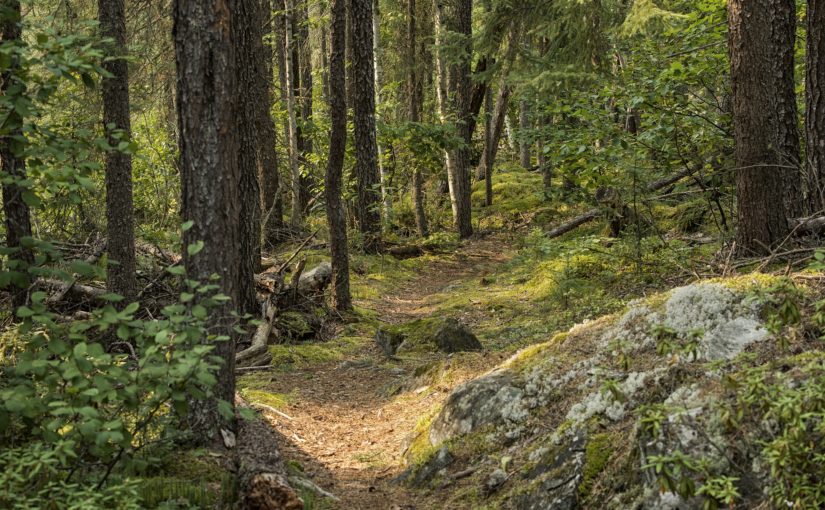Today’s post comes from Alex Campbell, a summer student at Wabakimi Provincial Park
Wabakimi Provincial Park — a two and a half-hour drive north of Thunder Bay — spans an area larger than Prince Edward Island.
This extensive wilderness area encompasses over 1,500 km worth of prime canoe routes, with portages varying in length from 20 to 1,800 m. Each portage is maintained by a small group of extremely hard-working people: Wabakimi’s canoe rangers.
Our canoe rangers’ local knowledge
For the last 20 years, Wabakimi has employed two to four team members through a partnership agreement with a local First Nation community. Three of our crew members have been Wabakimi canoe rangers since the beginning.
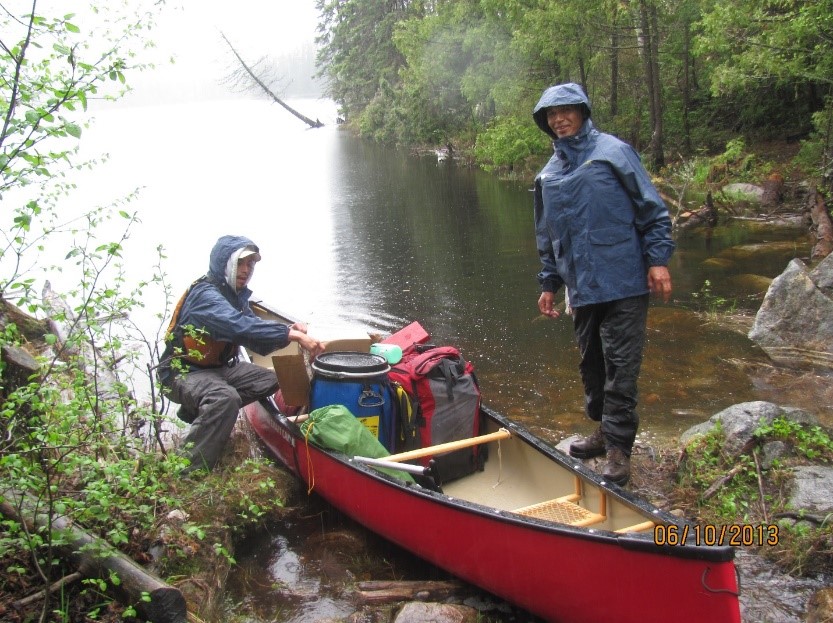
The rangers know the trappers, outfitters, the best fishing spots, and the easiest way through a seemingly impassable wall of brush. They’ve been paddling the area’s lakes and rivers since they were young. Their knowledge and understanding of the landscape are remarkable and extremely valued.
This route, that route
The canoe routes in the park, as marked on the canoe route planning map, are divided into eight significant trips. The canoe rangers’ schedule varies throughout the summer, but generally, they paddle for ten days.

By completing at least four routes each summer, every route is maintained once every two years (at least!).
Park staff and the canoe rangers are the only people authorized to open, rehabilitate, or improve on portage trails. This is to protect sensitive cultural sites and other natural features, such as critical wildlife habitat. Park visitors may only remove downed/dead trees that present a direct obstacle to them passing on the portage trail.
Protecting our natural heritage
When aiming to preserve historical trail conditions, it is important to consider traditional clearing methods. The canoe rangers ensure portages are two feet wide at the base, with just enough room to carry a canoe overhead. Their experience and understanding of local conditions ensure that the portages remain just so!
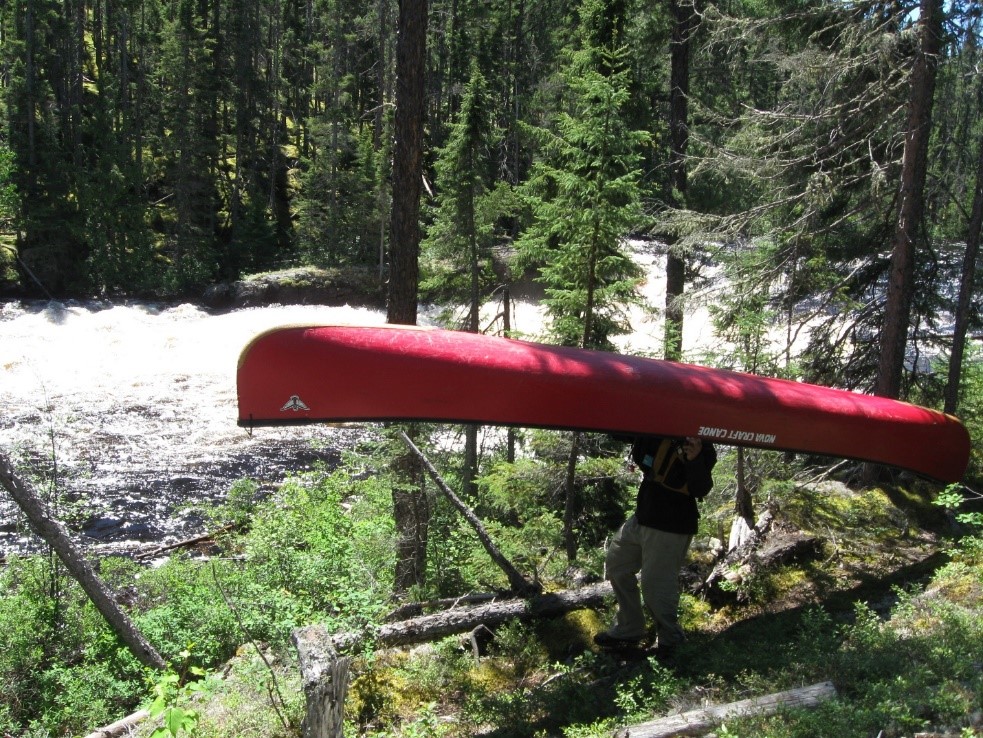
If the trails are brushed back too much, sunlight reaches the trail bed and encourages understory plant growth resulting in increased maintenance requirements.
Keeping with tradition also means that you won’t find flagging tape or portage signs at portage entrances. Instead, a simple blaze or cairn is placed when needed. Along frequently traveled routes and large lakes, portages can be found relatively easily.
In areas with less visitor use, excellent navigation skills and a keen eye may be essential to spot a portage’s location.
Maintenance season
With a short window of time to complete all the work, crews face some timing restraints. The ice often doesn’t clear until mid-May, and it is generally too cold by October.

Logistically, merely getting all necessary people and equipment into the areas of the park that require route maintenance poses several challenges. Staff, gear, and equipment shuttle between Thunder Bay, Armstrong, and access points. It takes time and excellent driving skills to make it down bush roads.

Flights into more remote areas of the park are weather dependent.
Limited cell phone service is available only within Armstrong, and not outside of the town. Once crews do make it into the park, they must be able to maintain equipment, service chainsaws, and navigate by map and compass should a GPS device potentially fail (although truth be told, the rangers could easily navigate the park without a map if they had to).
They also continuously communicate their location through SPOT units and satellite phones to park staff in the Thunder Bay office.
On top of all these challenges is the weather
Wabakimi weather is notorious for its unpredictability, alternating between blue-sky heat waves and sudden onslaughts of heavy rain and extreme storms. Flexibility and a “roll with the punches” approach is an essential quality when working as a canoe ranger.
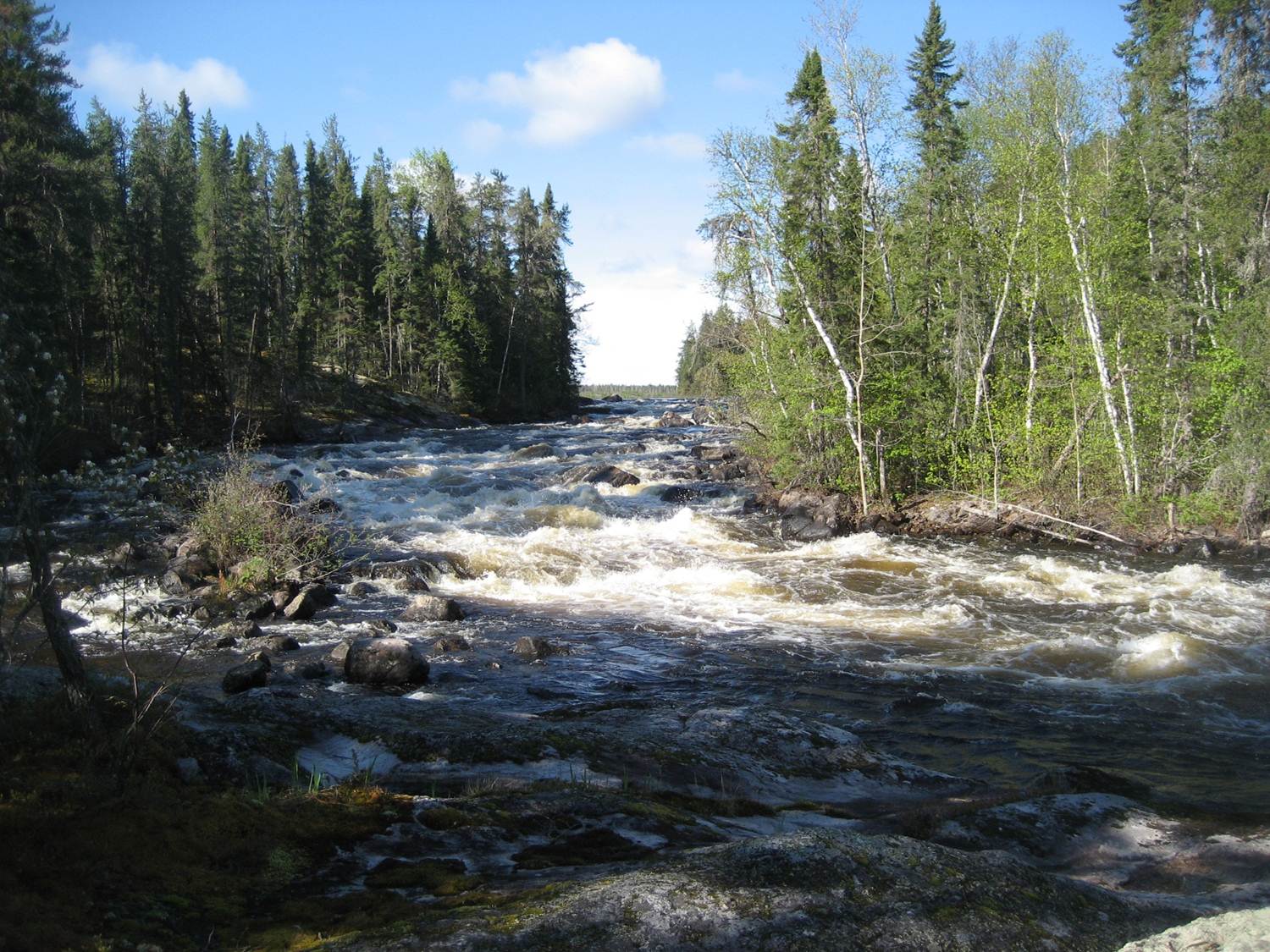
Every day is different. Crews are constantly exploring remote areas, seeing new and exciting things, and dealing with the unexpected. It is reassuring, then, that despite all these challenges, the portages get cleared year after year.
The Canoe Ranger crews operate under the following goals:
- Protect and manage ecosystems, and natural and cultural heritage features to maintain ecological integrity.
- Provide opportunities for ecologically sustainable outdoor recreation.
- Provide a service to park visitors so they can have a safe and enjoyable trip.
BUT the rangers do so much more!
Crews also collect information on locations and conditions of campsites, portages, and boat caches. They record incidental wildlife sightings when out in the park, and help facilitate the Lakehead University Outdoor Recreation, Parks & Tourism Program’s annual trip to assist with park data collection.

Rangers also assist the park biologist with research initiatives. Over the years, they have helped with bathymetry (lake bed mapping), fish assessments, forest resource inventory, beaver monitoring (an important indicator species), as well as bird and bat song recordings.
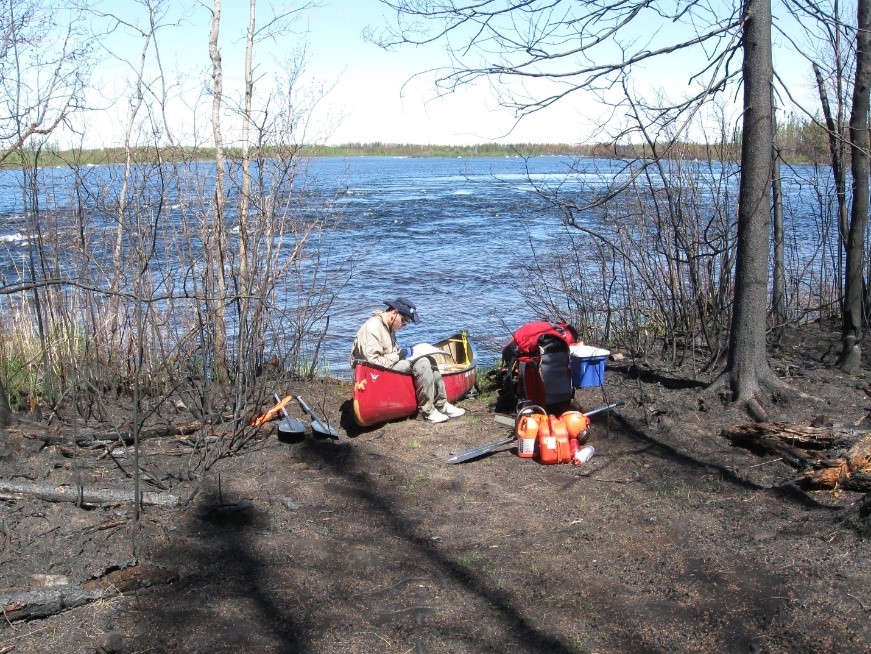
In addition to completing all these projects and maintaining the canoe route system within this massive area, the canoe rangers keep us connected to Wabakimi’s roots. Their knowledge of cultural history, traditional understanding of the land and its various resources, and the park itself is astonishing.
Say hello
Though many visitors come to Wabakimi to find solitude in the wilderness, you may consider yourself lucky to run into a canoe tranger crew.
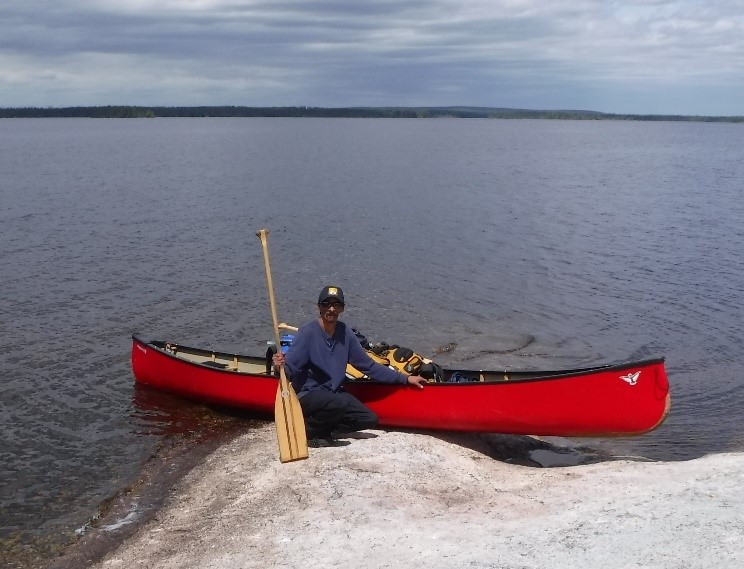
If you do cross paths, take the time to talk to and thank them – you’ll be glad you did.
